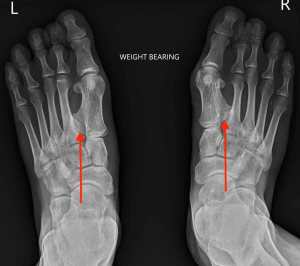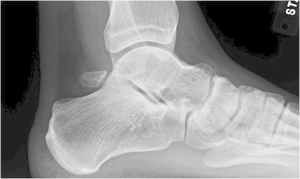
Polymetatarsia is a rare condition in which there are more than five metatarsal bones in the forefoot. The most common type of polymetatarsia involves an additional metatarsal bone between the fourth and fifth metatarsals, which is called a “supernumerary metatarsal.” This extra bone can cause pain, discomfort, and difficulty with shoe fitting.
Polymetatarsia may be congenital (present at birth) or acquired (due to injury or disease). It can be diagnosed through physical examination, X-rays, and other imaging studies. Treatment options include wearing custom orthotics or padding to relieve pressure on the foot, modifying shoes to accommodate the extra bone, or surgical removal of the supernumerary metatarsal. The best treatment option depends on the individual’s symptoms and the severity of the condition.


